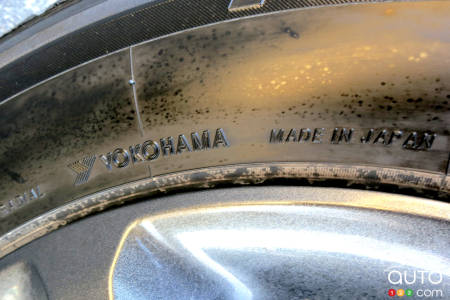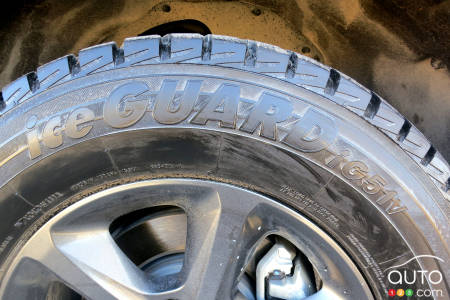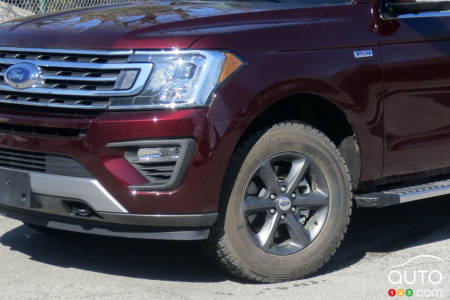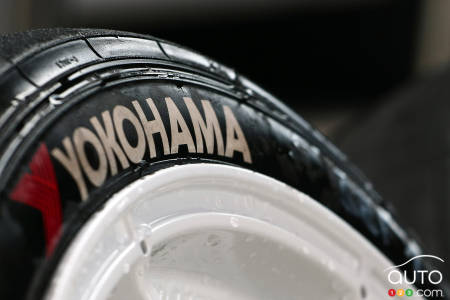In collaboration with Yokohama
Important Note: Yokohama, the principal sponsor of this report, recently launched The Extra Mile social initiative, the goal of which is to recognize and honour frontline workers putting their health and lives at risk every day to protect those of Canadians.
Over a period of ten weeks, Yokohama asked its social-media community to nominate frontline workers who are going the extra mile. The company will donate a set of new tires to a new deserving recipient every week. Nominations can only made on the brand’s Facebook page, and people are asked to share the nominee’s story as they drive their vehicle to the front lines.
The campaign, established by Yokohama’s partner agency, Toronto-based We Are Social, will include the launch of a minute-long video and posting of related materials on the brand’s social media platforms, to spread the word about the campaign and encourage people to nominate deserving frontline workers.
Really, few products have vital information written on them as legibly as vehicle tires do. And yet, there are many motorists even today who don't know what their car is rolling on.
When it's time to change tires or buy new ones, far too many car and light-truck owners arrive at the service counter of their tire centre without being able to provide the size of the tires on their vehicle. When the technician or adviser informs them their car, SUV or pickup has tires of a size – say, P205/65 R17 or other - they shrug their shoulders, and that’s the end of that!
Similarly, when consumers see low prices of tires displayed in the ads, they often don’t understand that those apply is for the smallest size available for the product line in question. The tires they will need are likely to be more expensive since they could be larger.
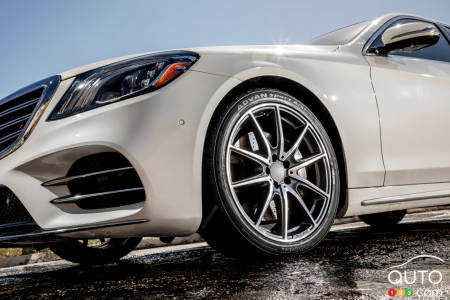
Information galore
Look at the sidewall of a tire and you'll see a lot of information embossed on it. First off, the most important information, what concerns you the most, is the tire size. Take, for example, the Yokohama IceGuard IG51V 275/65 R18 116T IG51 winter tires fitted on a Ford Expedition SUV we recently used for purposes of a test drive.
This is not the case here particularly, but many manufacturers will start with the letter P for "Passenger" (P-Metric for North American vehicles) which identifies a tire as being designed for passenger cars or light-duty pickup trucks.
In the case of commercial or other heavy-duty vans or trucks (for instance the Ford F-Super Duty, Ram HD, Chevrolet or GM Heavy Duty), the first letters will be LT for "Light Truck". These tires are of stronger construction and require higher air pressure.
Incidentally, if you have to mount new tires on a trailer, you will need tires that begin with the letters ST, which means "Special Trailer".
Now, back to our Yokohama tires on the Expedition, identified by the numbers/letters 275/65 R18 116T IG51. Let’s decode what that tells you.
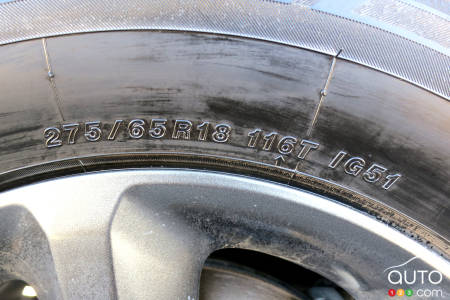
275 - This number identifies the width of the tire tread in millimeters. In this case, the tire in question is 275 millimetres wide.
65 - The second number is usually two digits. In the jargon of the tire world, this is called "profile". In this case, it’s 65. This number indicates that the sidewall height is 65% of the tread width. The higher the number, the higher the sidewall height. The lower it is, the thinner the profile of the tire will be.
R - Then comes a letter, in most cases an "R", which means it's a radial tire, the current industry standard. It should be noted that bias ply or diagonal ply tires are still on the market, but they are generally reserved for specific applications such as on certain trailers.
18 - Finally, the last number featured in the series, in this case 18, refers to the diameter of the wheel on which the tire is to be installed, though using English measuring. So, this Expedition rides on 18-inch rims. The IG51 that you can see on the images is just a repetition of the model identification, which is not common in all tire manufacturers.
116T - The small block of two or three numbers and a letter that follows, 116T in our example, refers to the load index and the speed index that this tire can support. In the case of the number 116, it corresponds to an industry code (from 70 to 126, 116 meaning 2535 lb or 1150 kg), while the letter T tells us that the tire can safely withstand a sustained maximum speed of 118 mph or 190 km/h.
Here is a complete table of the industry's speed ratings:
L 75 mph 120 km/h (special off-road tires)
M 81 mph 130 km/h (temporary spare tires)
N 87 mph 140 km/h
P 93 mph 150 km/h
Q 99 mph 160 km/h (some winter tires with or without studs)
R 106 mph 170 km/h (stronger light-duty pickup tires)
S 112 mph 180 km/h (passenger tires)
T 118 mph 190 km/h (passenger tires)
U 124 mph 200 km/h (performance tires)
H 130 mph 210 km/h (performance tires)
V 149 mph 240 km/h (performance tires)
W 168 mph 270 km/h (ultra-high performance tyres)
Y 186 mph 300 km/h (ultra-high performance tires)
Z more than 149 mph or 240 km/h often accompanied by the letters W and Y

Some other information may appear on the sidewalls, including one indicating the maximum air pressure ("max. press.") that the tire can withstand. Take note, however, this does not refer to the pressure recommended by the car manufacturer. To check what that is, you need to check the plaque glued in the door of the vehicle (usually the driver's door), or else consult the owner's manual.
Further down the side of the tire, you will notice the letters DOT, which stands for Department of Transportation. This means that the tire has been approved by the U.S. Department of Transportation, to which the Canadian industry adheres. The DOT will be followed by a code identifying the factory where it was produced and a size code.
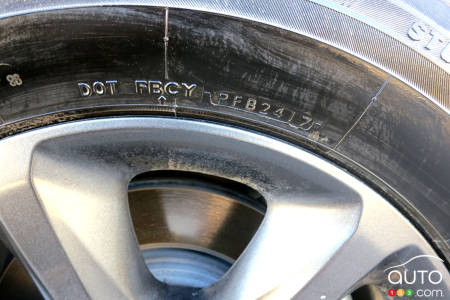
What matters to the consumer are the numbers that follow this code - in this case, 2417. These indicate the week and year in which the tire was manufactured. So in our case, 24 means the 24th week of the year and 17 means 2017. This code will help the tire dealer, who can use that to help determine if you should change your tires, for example if they are too old (the industry recommends that you don't exceed seven years!).
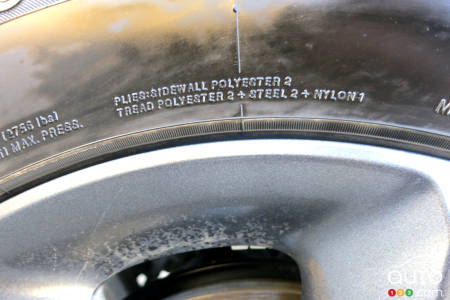
Of course, there’s also other information that relates mostly to industry codes or tire construction (such as Plies: Sidewall Polyester 2, Tread Polyester 2 + Steel 2 + Nylon 1) if you are interested in this technology.
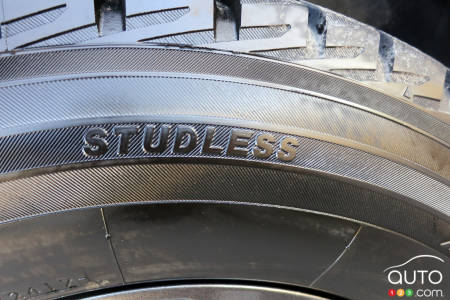
What's most important for the consumer to understand are the size numbers explained above. Understand what these mean, and you will understand the jargon of the salesperson in front of you at the tire centre.
